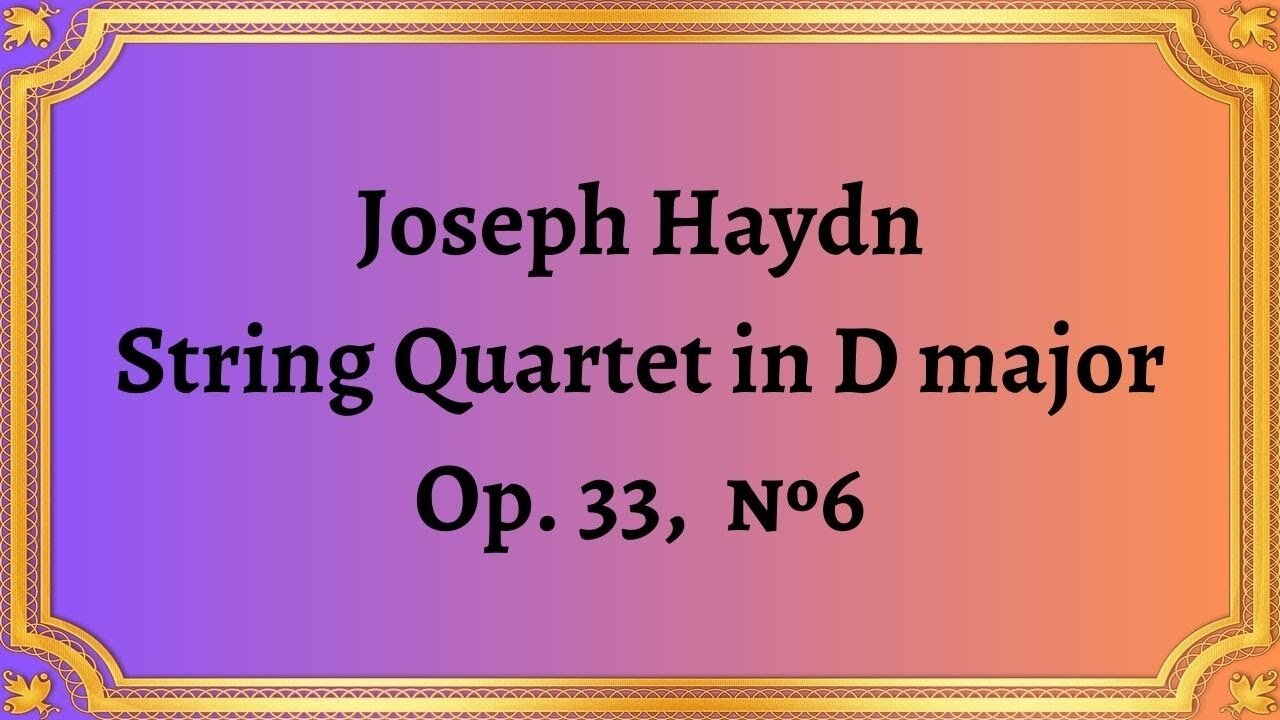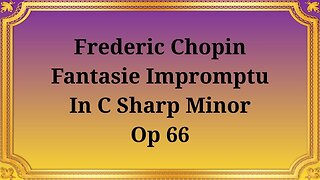Premium Only Content

Joseph Haydn String Quartet in D major, Op. 33, №6
#JosephHaydn #StringQuartet #DMajor #Op33No6 #TimesOfDay #classicalmusic #musicalcomposition #dynamics #instrumentation #harmony #melody
The String Quartet in D major, Op. 33, No. 6 by the Austrian composer Joseph Haydn is a renowned piece of chamber music. Haydn composed this string quartet, along with five other quartets, in 1781. It is also known as the "Largo" quartet because of the particularly slow, mournful movement in Largo tempo.
The quartet consists of four movements, the first being in Sonata form. The second movement is the aforementioned Largo, a slow and introspective piece that showcases the expressive nature of the cello. The third movement is a Minuet and Trio, a dance in triple meter, while the final movement is a lively and complex Rondo.
One of the notable features of this quartet is its use of counterpoint, particularly in the first and last movements. Counterpoint is a musical technique in which two or more melodic lines are played together in harmony, creating a complex interplay between the different parts.
The String Quartet in D major, Op. 33, No. 6 is also known for its use of humor and surprise elements, which were characteristic of Haydn's style. For instance, in the final movement, the instruments imitate bird calls, giving the quartet a light-hearted and jovial feel.
Overall, Joseph Haydn's String Quartet in D major, Op. 33, No. 6 is a masterful composition that showcases the composer's skill with counterpoint and his unique sense of humor. It remains a popular choice for chamber music enthusiasts and continues to inspire and delight audiences with its complex melodies, emotional expression, and unexpected surprises.
You have the opportunity to support the channel https://destream.net/live/RadSiarAl/donate
-
 4:24
4:24
Classical music_Music Inspiration
1 month agoFrederic Chopin Fantasy-Impromptu in C-sharp minor, Op 66
831 -
 1:31:25
1:31:25
The Charlie Kirk Show
2 hours agoTHOUGHTCRIME Ep. 104 — Post-Election Palette Cleanser + Tucker/Fuentes Interview Reaction
53.7K16 -
 LIVE
LIVE
tminnzy
1 hour agoSmooth Moves Only 💨 | Naraka: Bladepoint Chill Gameplay | !gx
94 watching -
 1:04:33
1:04:33
BonginoReport
3 hours agoWill The LA Dodgers Dodge WH Visit?! - Nightly Scroll w/ Hayley Caronia (Ep.172) - 11/06/2025
24.2K57 -
 LIVE
LIVE
Tundra Tactical
5 hours ago $0.01 earnedDadlefield Game Night BF6 New Update Weapon Grind
146 watching -
 15:39
15:39
Megyn Kelly
5 hours agoTucker Carlson on Why He Interviewed Nick Fuentes and What He Wanted to Convey To Him
49.8K65 -
 1:14:10
1:14:10
Kim Iversen
4 hours agoZionists PANIC Over Muslim Mayor In NYC
84.6K129 -
 1:50:40
1:50:40
Redacted News
4 hours agoBREAKING! Trump Makes HUGE Announcement Trying To Save MAGA, Cost of Living & Israel CRUSHED GOP
117K221 -
 LIVE
LIVE
Dr Disrespect
10 hours ago🔴LIVE - DR DISRESPECT - ARC RAIDERS - QUEST MASTER
1,173 watching -
 2:17:37
2:17:37
The Quartering
6 hours agoFooled Again! Mamdani Backtracks Everything & Today's Breaking News!
207K126